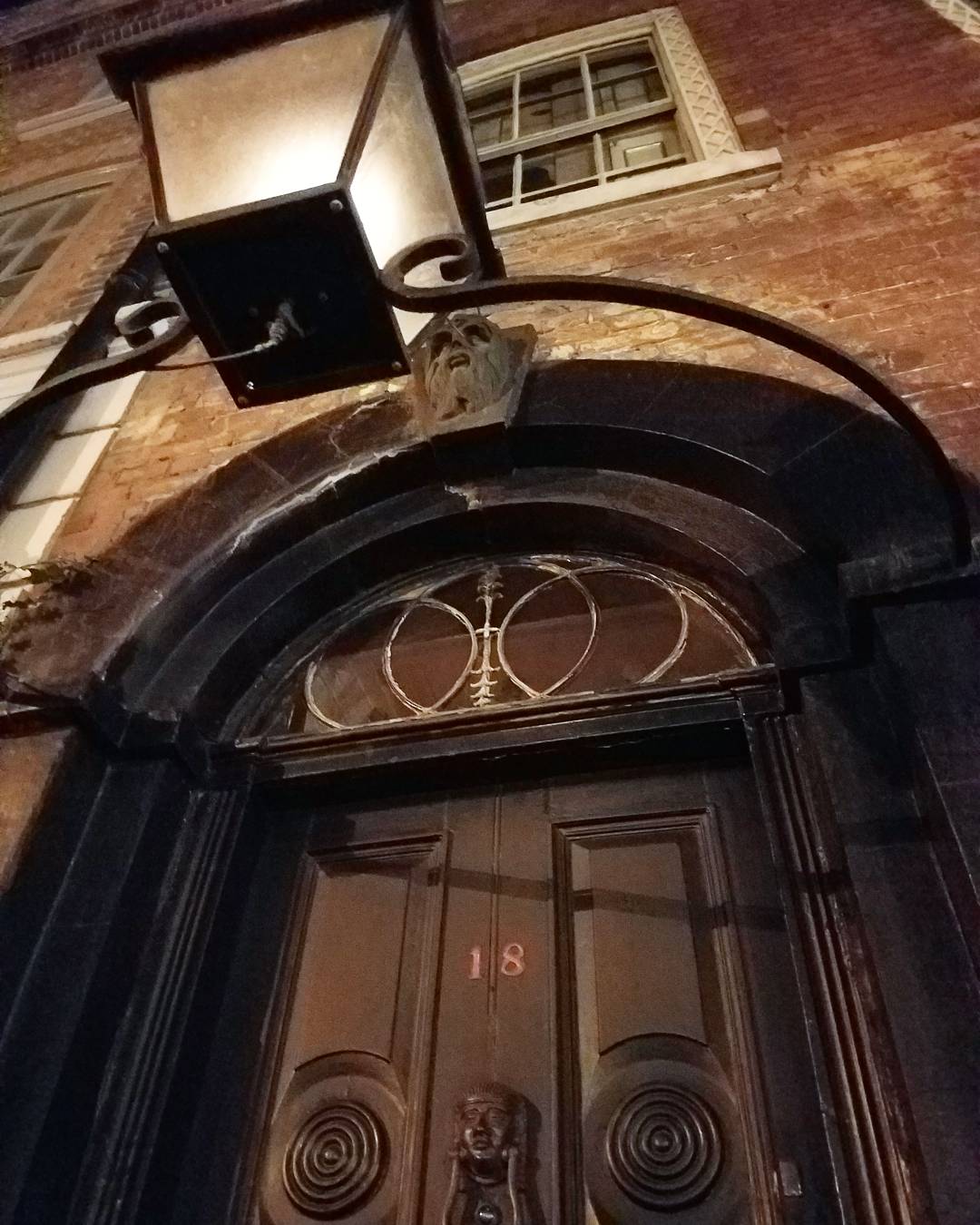The Unique Experience of the Dennis Severs’ House Museum

The WPAMC Class of 2018 visits the Holburne Museum in Bath, England. As opposed to the Dennis Severs’ House, the Holburne uses object focused displays.
During our January field trip to England, the WPAMC fellows visited many museums. Some featured traditional museum interpretation: exhibitions with wall text and objects brightly illuminated and perched on pedestals. However, one museum in particular diverged from this interpretive path. The Dennis Severs’ House Museum adopted a more impressionistic approach to historical interpretation using sensory immersion and imaginative displays. Unlike the show-and-tell approach utilized by many museums, Dennis Severs’ incorporated a flair for the dramatic. While rather theatrical, the effect was stunning. The objects in the collection were brought to life by putting them in context and therefore transporting the visitor back in time.

The imposing door to the Dennis Severs’ House Museum. Photos are not allowed inside.
The WPAMC fellows entered the Dennis Severs’ museum after dark. Candles and smoldering hearth fires scented the atmosphere and exposed the beautifully cluttered interior. At the Dennis Severs’ house talking and touching are not allowed. Each room features its own soundscape. Horses are heard clopping through the cobble stone street outside and the imagined inhabitants of the house creak floorboards as they walk in the next room, humming to themselves as they go about their day.
The museum visitor is invited to haunt the rooms, to become a voyeur in the life of a family of Huguenot silk-weavers. Their dinner is left half-eaten on the dining room table and a live cat sleeps soundly on the bed – perhaps enjoying the warm spot left by its recently risen owner. Visitors never actually see the home’s inhabitants, but their presence is always felt. The objects appear to be left just as they were last used, seemingly not arranged by a curator at all. The effect borders on spiritual. In order to be transported you have to suspend disbelief; you have to use your imagination to access a sense of the life of those historical inhabitants.
The interior of a room in Dennis Severs’ House Museum. Courtesy of the Dennis Severs’ House.
After visiting Dennis Severs’ house, I became very curious as to how such immersive and imaginative interpretation changes visitors’ understanding of history. What is lost when object labels are abandoned? What meaning can be gleaned from imagining yourself into the past? Should other museums adopt more imaginative interpretive techniques?
While I don’t have clear answers to these questions, the January field trip helped me to realize the endless possibilities of teaching history with material culture. The museum made me feel more connected to the past and sparked all new questions about it. It helped to humanize the study of material culture. While wall text would have been helpful for someone like me studying design and materiality, it would have certainly destroyed the magic. For now, I can consider it a challenge to find the best ways to incorporate living contexts into museums with very different collections, spaces, and stories.
By Tess Frydman, WPAMC Class of 2018


Leave a Reply